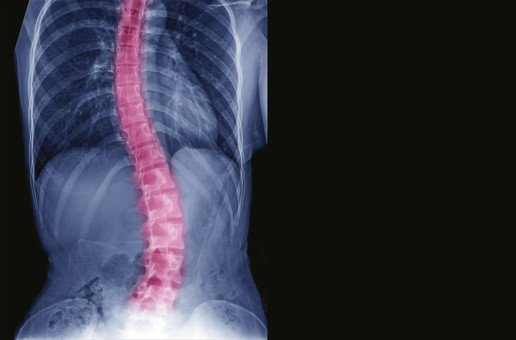
Why Won’t My Child Just STAND UP STRAIGHT!
That pre-teen slouch can really get on your nerves. You might poke your child between the shoulder blades, nag her about the importance of good posture or threaten to put a broom down the back of his shirt.
But sometimes, the slouch is more just a slouch. Sometimes, that curve in your child’s spine could be scoliosis.
What is Scoliosis?
Simply put, scoliosis is a sideways curvature of the spine. It develops most often between the ages of 10-15, during the growth spurt just before puberty. Sometimes, it can present when your child is an infant or in early childhood. While a healthy spine runs straight up and down in the middle of the back. scoliosis will cause the spine to curve to the side. Your child may also lean a little or their shoulders and hips may look uneven.
What Causes Scoliosis?
Although scoliosis can be caused by genetic conditions such as cerebral palsy and muscular dystrophy, most of the time the cause cannot be identified. Most cases are mild but some curvatures can become more severe as the child grows. About 2-3% of Americans have scoliosis.
Can Scoliosis Be Prevented?
Because there is no clear cause of scoliosis, prevention is not possible. Your child cannot develop scoliosis from sports injuries, heavy backpacks or poor posture. While all of these factors can lead to sore muscles and aching bones, they do not cause scoliosis. Scoliosis will also cause pain, as nerves and joints are stretched, compacted and irritated.
How Is Scoliosis Diagnosed and Treated?
Dr. Aribindi will perform a thorough exam which will include x-rays, checking your child’s posture, and having them twist from side to side. Children diagnosed with mild scoliosis will closely monitored via x-ray as they grow, and in many cases, no treatment will be necessary.
The decision to begin treatment is made on a case-by-case basis. Curves that are located in the center spine, the thoracic, are more apt to worsen more often than curves in the upper, cervical, or lower, lumbar sections of the spine. Dr. Aribindi will also consider the curve pattern, as S-shaped curves are more likely to worsen than C-shaped curves. The age or your child and the maturity of her bones matters too. When child’s bones have stopped growing, the risk of progression is low.
When your child’s bones are still growing and mild scoliosis has been diagnosed, Dr. Aribindi may recommend a brace. Your child’s brace will be custom molded of plastic, contoured to fit under the arms, and wrap around the rib cage and lower back. Your child should wear the brace as recommended, usually between 16 and 23 hours each day. A brace will not cure scoliosis nor will it reverse the curve, but it will prevent progression.
When you notice your child’s spine beginning to curve – at any age – contact Southland Orthopedics immediately by clicking here or calling 708-283-2600. Dr. Arbindi will exam, diagnose and treat your child to halt the progression of scoliosis as soon as possible.

